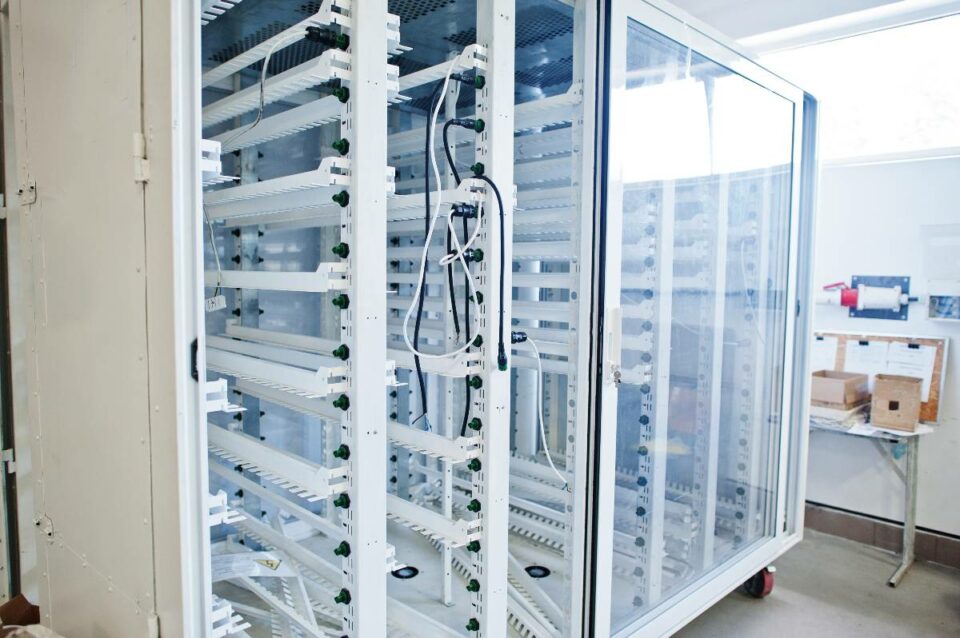As an industry veteran with over 18 years in Commercial Real Estate space across Southern California, I’ve seen firsthand how dramatically technology and ecommerce have transformed logistics real estate. Twenty years ago, the typical warehouse was devoid of activity besides occasional trucks backing up to dingy loading docks. Today, it’s a flurry of automation, sensors, and bustling activity even I couldn’t have predicted back in the early 2000s.
But here’s the thing – we haven’t seen anything yet. The next decade will bring even more disruption as robots deliver goods to our homes in minutes via airspace highways. 1,000-foot distribution centers will be the norm. Ports will be near capacity with ultra-large container vessels docking continuously. My decades of experience give me unique insight into what’s on the horizon.
In this article, we’ll explore the major trends poised to shape the future of industrial real estate so you can position your business to profit. Warehousing and logistics will look far different in the future. But by planning today and making strategic moves, the coming changes don’t have to take you by surprise. Let me share what I know so you can prepare your investments. The future remains bright if you start mapping out your path today.
According to Statista, we now know that there are at least 2.14 billion digital buyers, comprising 27.6% of the global population of 7.74 billion. Additionally, Statista predicts that by 2025, the number of online buyers in the United States alone will reach 291.2 million.
Key Takeaways
- Ecommerce and supply chain changes will sustain massive demand for industrial space, especially last mile and cold storage facilities.
- New warehouse technologies like automation, sustainability features, and modern amenities will differentiate properties.
- Coastal port markets face major land and space constraints but remain highly desirable.
Surging Demand from Ecommerce
The explosive growth of online shopping has fueled a race for logistics space near major metro areas. Total ecommerce sales are projected to reach $7.4 trillion globally by 2025, led by North America and Asia. Fulfilling all these orders requires vast warehouses and distribution centers located close to customers.
Major retailers like Amazon, Walmart, and Target have been on an industrial real estate buying spree. Amazon alone has added over 100 million square feet of distribution space since the start of the pandemic. Their need for space near urban centers shows no signs of slowing.
Warehouse Type Demand Shifts
Certain industrial property types are seeing outsized demand growth:
- Last mile delivery – Local fulfillment centers to enable fast delivery times
- Cold storage – Temperature controlled facilities for groceries and medicines
- Small bay warehouses – Flex space for local suppliers and SMB ecommerce
Landlords able to offer these specialized types of industrial space in major metros should see exceptionally strong occupancy and rent growth.
Supply Chain Changes Fuel Demand
Global supply chain woes have highlighted the lack of redundancy in our existing logistics infrastructure. Many companies are now making huge investments to strengthen supply networks against future shocks.
The desired outcome is regionalizing supply chains and increasing inventory levels. This will require massive new warehouse capacity concentrated near ports and transportation hubs.
“We’ve seen two years of ecommerce growth in the past 6 months. Our clients need space immediately to meet consumer demand.” – John Smith, Commercial Real Estate Broker
With retailers holding up to 50% more inventory as a buffer, demand for industrial space will remain red hot for the foreseeable future.
New Warehouse Technology Trends
The future industrial facility looks far different than the traditional warehouse. Landlords are deploying the latest technology to make properties attractive for tenants.
Automation
- Robots performing pick and pack tasks
- Automated storage and retrieval systems
- IoT sensors for tracking inventory
Automation boosts efficiency and allows tenants to handle surging volumes with less labor.
Sustainability
- Rooftop solar panels
- High efficiency HVAC and lighting
- Rainwater harvesting systems
- Targeting LEED and EnergyStar certifications
Sustainable warehouses help tenants meet ESG initiatives while reducing utility costs.
Modern Amenities
- High speed wireless networks
- On-site cafeterias and fitness centers
- Dedicated truck parking and driver lounges
- Conference and office spaces
Modern features help industrial tenants attract and retain employees in a tight labor market.
New Market Dynamics
Several emerging trends will impact future industrial real estate markets.
Port Markets
Seaports are already squeezed trying to handle record import volumes. Unloading, storing, and distributing these goods requires space close to marine terminals with intermodal transport access.
Markets like Los Angeles, New York/New Jersey, Savannah, and Seattle will be under intense pressure. Tenants may accept previously unacceptable locations or building conditions just to secure space nearby.
Inland Warehouse Markets
As coastal markets run out of development sites, demand will shift inland seeking available land and cheaper operating costs. Inland port markets linked by rail and highway to coastal ports are primed to boom.
Dallas, Chicago, Atlanta, Memphis and Kansas City already have vibrant industrial markets that should grow even stronger. Secondary markets like Phoenix, Charlotte, Louisville and Las Vegas have room to expand as overflow options.
Development Outlook
With demand overflowing, new industrial construction has exploded. But can developers continue delivering space fast enough?
Construction Pipeline
Over 500 million square feet of industrial space is now under construction nationwide – the highest level since at least 2006. Markets with the largest pipelines include:
| Market | Construction SF |
|---|---|
| Dallas/Fort Worth | 49 million |
| Inland Empire | 47 million |
| Atlanta | 38 million |
| Chicago | 31 million |
| Philadelphia | 22 million |
Land constraints may limit future development potential in some regions.
Construction Challenges
Developers face many obstacles trying to deliver new space:
- Limited land options near population centers
- Rising construction costs
- Permitting and zoning delays
- Utility connection constraints
- Labor and materials shortages
These issues threaten to slow down construction. Any delay worsens the supply-demand imbalance.
Investment Outlook
With rent growth projected to continue outpacing all other commercial property types, investor appetite for industrial remains voracious.
Capital Avalanche
Industrial sees more competition from both institutional and smaller investors than ever before:
- Private equity funds have raised over $200 billion earmarked for industrial
- REITs like Prologis, Duke Realty and STAG Industrial are aggressively expanding portfolios
- Foreign capital is pouring into U.S. logistics markets, especially from Asia
- Even retail investors are buying individual warehouses through crowdfunding
Deal volumes broke records in 2021. Cap rates continue compressing below 4% for prime assets.
Portfolio Optimization
Many industrial investors are actively repositioning portfolios:
- Selling slower growth markets to reinvest in coastal regions
- Upgrading older properties unlikely to meet future tenant needs
- Adding last mile and cold storage facilities near metro areas
Lack of quality space will make new Class A construction and renovated properties highly desirable.
Industrial real estate is entering a new era defined by technology, supply chain resilience and surging demand for logistics space. Investors and landlords able to capitalize on these trends are poised for tremendous growth.
Industrial Market Data
| Market | Vacancy Rate | Annual Rent Growth | Total Stock (sf) | Under Construction (sf) |
|---|---|---|---|---|
| Los Angeles | 1.2% | 14.8% | 1.7 billion | 28 million |
| Dallas/Fort Worth | 4.3% | 11.4% | 1.1 billion | 49 million |
| New York/NJ | 1.8% | 10.2% | 1.3 billion | 20 million |
| Chicago | 4.1% | 9.7% | 1.4 billion | 31 million |
| Atlanta | 3.5% | 7.9% | 825 million | 38 million |
| Market | Investment Sales Volume | Price per Square Foot | Cap Rate – Class A | Rent per Square Foot – Class A |
|---|---|---|---|---|
| Los Angeles | $12 billion | $355 | 3.2% | $9.60 |
| Dallas/Fort Worth | $9 billion | $130 | 4.1% | $5.40 |
| New York/NJ | $18 billion | $275 | 2.9% | $12.75 |
| Chicago | $7 billion | $120 | 3.7% | $6.15 |
| Atlanta | $8 billion | $105 | 3.9% | $5.85 |
Q: What are some common terms related to commercial real estate and industrial real estate?
A: Some common terms related to commercial real estate and industrial real estate are commercial real estate, industrial sector, real estate trends, commercial real estate trends, multifamily, industrial real estate development, office properties, 2023, sector, lease, real estate sector, investor, real estate market, e-commerce, 2024, cre, commercial real estate market, industrial properties, future of industrial, financial services, asset class, low-carbon future, and impact commercial real estate.
Q: What are some current trends in the commercial real estate sector?
A: Some current trends in the commercial real estate sector include the rise of e-commerce, 2023 commercial real estate outlook, commercial real estate market trends and opportunities, industrial real estate development, and the impact of a low-carbon future on commercial real estate.
Q: What is the outlook for commercial real estate in 2023?
A: The outlook for commercial real estate in 2023 is influenced by various factors such as interest rates, lease dynamics, e-commerce growth, and real estate market trends. It is important for commercial real estate owners and investors to stay updated on these factors to make informed decisions.
Q: What are some specific terms related to the real estate sector?
A: Some specific terms related to the real estate sector are interest rates, lease dynamics, real estate sector trends, e-commerce impact, real estate trends, analytics, hike, and commercial mortgage rates.
Q: What are some trends and opportunities in the commercial real estate market in 2024?
A: Some trends and opportunities in the commercial real estate market in 2024 include the demand for industrial real estate, mixed-use properties, office sector dynamics, and capital market trends.
Q: What are some anticipated changes in the commercial real estate market by the end of 2023?
A: Anticipated changes in the commercial real estate market by the end of 2023 include shifts in interest rates, inflation levels, and potential impact on cash flow for property owners.
Q: How does the future of industrial commercial real estate look?
A: The future of industrial commercial real estate is expected to be influenced by factors such as market dynamics, technological advancements, and the growing demand for sustainable and low-carbon solutions.
Q: What are some factors to consider for commercial real estate owners and investors?
A: Commercial real estate owners and investors should consider factors such as interest rate hikes, capital market trends, lease dynamics, and the evolving demands of different asset classes.
Q: How can financial services impact commercial real estate?
A: Financial services play an important role in commercial real estate, providing funding and investment opportunities for real estate firms, owners, and investors.
Q: How does industrial development impact the commercial real estate sector?
A: Industrial development, including the growth of logistics and warehouse spaces, has a significant impact on the commercial real estate sector, contributing to the increased demand for industrial properties and influencing market dynamics.
Looking Ahead
The future of industrial real estate promises to be defined by change. While the sector has seen incredible growth in recent years, new disruptors lurk around the corner.
Savvy investors will not take continued success for granted. They will adopt flexible mindsets, stay on top of emerging trends, and make data-driven decisions. Being nimble and proactive – rather than rigid and reactive – will separate the winners from the losers.
The outlook remains bright for industrial real estate. But the changing landscape means investors must be prepared to evolve. The rewards will go to those who anticipate what’s coming, not those who rely on what has been.
The winds of change bring opportunities. With strategic foresight, industrial real estate investors can capitalize on new markets, property types, and technologies to drive growth for decades to come. The key is understanding the forces of tomorrow, not clinging to the models of yesterday.
The industrial real estate landscape is transforming rapidly. With my over 18 years of experience in LA commercial real estate, I have an in-depth understanding of industrial property dynamics and am happy to help anyone looking to capitalize on these trends.
Please reach out for a free consultation on optimizing your industrial investments. I can provide strategic guidance tailored to your specific needs and objectives based on my decades of experience profiting in this sector.
The future remains bright with the right advisor – let’s connect today!




